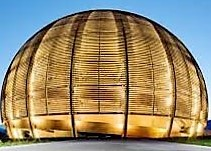Conveners
Monday - Session 3
- Michael Paul
Neutron-induced reactions play an important role in several stellar nucleosynthesis scenarios. Experimental determination of their rates are limited by the available neutron flux at the relevant energies, sample size, especially in the case of unstable isotopes, and detection. The Soreq Applied Research Accelerator Facility (SARAF) enabled enhanced opportunities for such measurements by...
F. Hammache$^1$, P. Adsley$^{2,3,*}$, L. Lamia$^{4,5,6}$, D.~S. Harrouz$^1$, N. de Séréville$^{1}$, B. Bastin$^7$, T. Faestermann$^{8}$, C. Fougères$^7$, R. Hertenberger$^{9}$, M. La Cognata$^{5}$, A. Meyer$^{1}$, S. Palmerini$^{10,11}$, R.G. Pizzone$^{5}$, F. de Oliveira$^7$, S. Romano$^{4,5,6}$, A. Tumino$^{12,5}$, H.-F. Wirth$^{9}$
$^1$ Université Paris-Saclay, CNRS/IN2P3, IJCLab,...
The $^{13}$C(α,n)$^{16}$O reaction is the prevalent neutron source for the main s-process, taking place in thermally pulsing low mass AGB stars. The direct measurement of this reaction at stellar temperature (~ 90 MK), corresponding to a Gamow window between 140 - 230 keV, has so far not been possible due to the very low cross section at these energies.
The LUNA collaboration performed the...
Neutron-induced reactions remain at the forefront of experimental investigations for the understanding of stellar nucleosynthesis and chemical evolution of the Galaxy in the region of medium- and heavy-mass nuclides [1]. We report on measurements of the cross section of neutron capture reactions $^{74,80,82}$Se$(n,\gamma)$ and $^{138,140,142}$Ce$(n,\gamma)$ relevant, respectively, to the weak...
